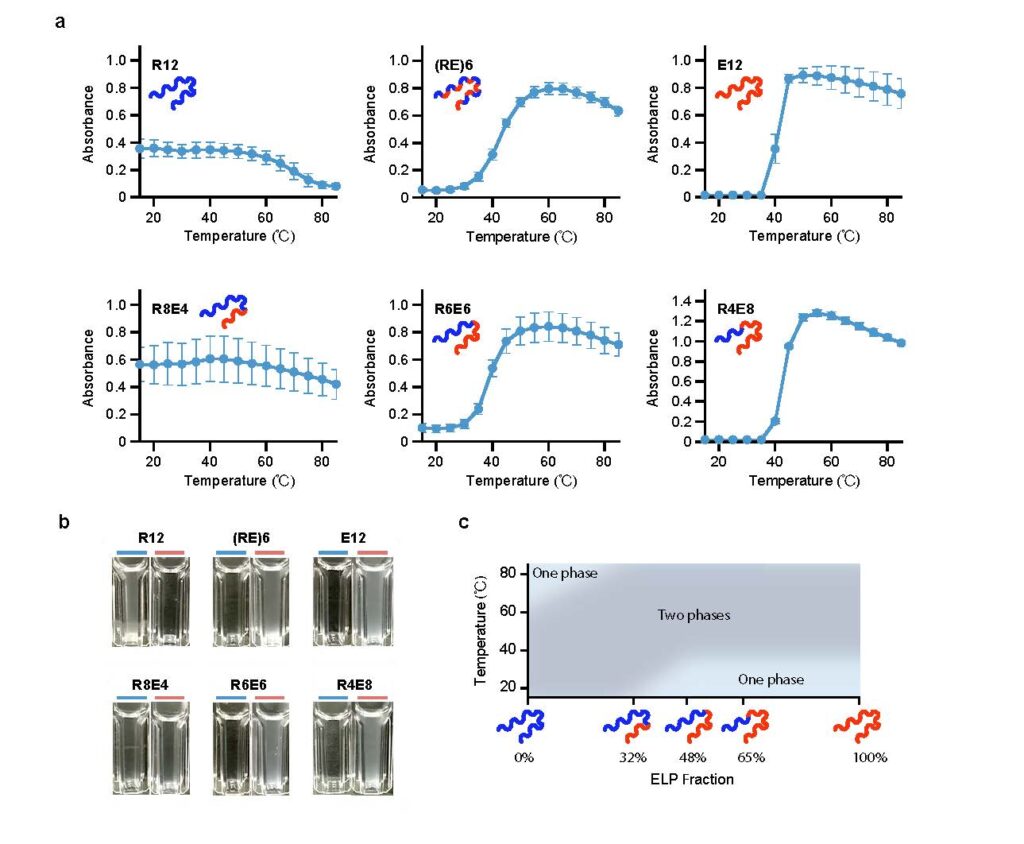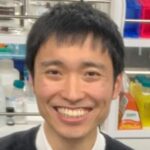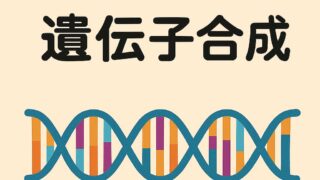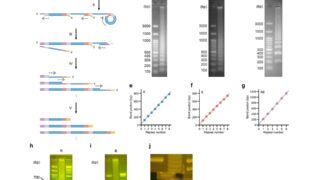A Novel Gene Synthesis Platform for Designing Functional Protein Polymers

シルクフィブロインやエラスチンなどの特定のアミノ酸配列が反復して現れるタンパク質は、遺伝子工学によって自由に設計できる魅力的な高分子材料です。しかし、そうしたタンパク質をコードする反復遺伝子の合成には一般的な合成法が使いにくいため多大な時間と労力を必要とします。本研究では、反復遺伝子を合成する新しい方法としてSCRCA法を開発しました。液液相分離を誘導するエラスチンやレシリンの配列をもとに様々な反復遺伝子を合成し、SCRCA法が従来法よりも優れた経済性・作業性を示すこと、機能と配列の関連性の調査に有用であることなどを明らかにしました。また、SCRCA法を少し改変するだけで多様性豊かな反復遺伝子ライブラリを簡単に構築できることも見出しました。このライブラリ構築法と指向性進化戦略を組み合わせることで所望の相分離現象を示すタンパク質の開発期間を大幅に短縮することに成功しました。反復配列を持ったタンパク質の設計は、高強度繊維、超高弾性材料、薬物送達技術、細胞内制御ツールなど多様な分野で検討されており、今回の成果はそうした研究のさらなる発展に貢献できると期待されます。
Abstract: Recombinant protein polymers with repeat sequences of specific amino acids can be regarded as sustainable functional materials that can be designed using genetic engineering. However, synthesizing genes encoding these proteins is significantly time-consuming and labor-intensive owing to the difficulty of using common gene synthesis tools, such as restriction enzymes and PCR primers. To overcome these obstacles, a novel method is proposed herein: seamless cloning of rolling-circle amplicons (SCRCA). This method involves one-pot preparation of repetitive-sequence genes with overlapping ends for cloning, facilitating the easy construction of the desired recombinants. SCRCA is used to synthesize 10 genes encoding hydrophilic resilin-like and hydrophobic elastin-like repeat units that induce liquid-liquid phase separation. SCRCA shows higher transformation efficiency and better workability than conventional methods, and the time and budget required for SCRCA are comparable to those required for non-repetitive-sequence gene synthesis. Additionally, SCRCA facilitates the construction of a repeat unit library at a low cost. The library shows considerably higher diversity than that of the current state-of-the-art method. By combining this library construction with the directed evolution concept, an elastin-like protein polymer with the desired functions can be rapidly developed. SCRCA can greatly accelerate research on protein polymers.
Authors: Toshimasa Homma, Rie Yamamoto, Lily Zuin Ping Ang, Alaa Fehaid, Mitsuhiro Ebara
Journal: Advanced Science, Early View
URL: https://doi.org/10.1002/advs.202410903
※本研究の一部はJSPS科研費22K14549, 24H01378, 農林水産省委託プロジェクト研究「昆虫(カイコ)テクノロジーを活用したグリーンバイオ産業の創出プロジェクト」JP22680575, 国立研究開発法人新エネルギー・産業技術総合開発機構(NEDO)若手研究者発掘支援事業JPNP20004および国立研究開発法人物質・材料研究機構(NIMS)NIMS 連携拠点推進制度AM2100の支援を受けて実施したものです。
投稿者プロフィール

- 一関工業高等専門学校 准教授
- 岩手県にある一関工業高等専門学校で教員をしております。いかに効率的に新しいバイオ素材や生命現象を創り出せるかに興味があります。





